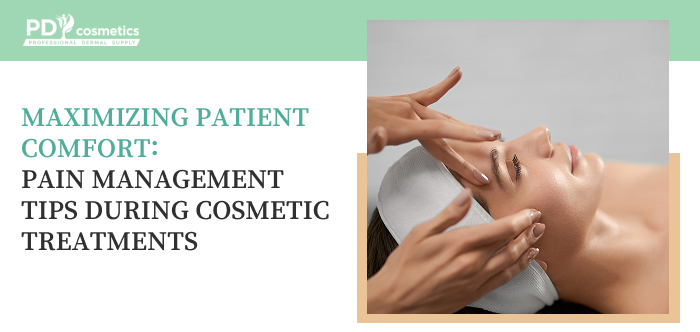
Contents
Creating an ideal experience during aesthetic treatments begins with strategies that keep patients relaxed and confident. Even though many patients associate cosmetic care with minimal discomfort, some treatments, especially those related to surgery, can still trigger anxiety.
Topical agents, as well as lidocaine that is injected locally, help soften sensation without the deeper unconscious state produced by general anesthesia. It allows the team to work efficiently while keeping patients relaxed. In some cases, slow-release options such as liposomal bupivacaine can extend relief for several hours, further decreasing discomfort after surgery.
Those who order dermal fillers benefit from local anesthetics and cooling techniques that make the experience far more pleasant. Effective intra-treatment support often includes intraoperative cooling, distraction methods, and communication that centers on what patients feel in real time. When management incorporates a thoughtful combination of pharmacologic and non-pharmacologic tools, clinicians reduce discomfort with obvious effects:
In some cases, adjunct options like gabapentin may be used before certain types of facial surgery, and the administration of a single dose can contribute to decreasing post-treatment sensitivity.
Post-treatment discomfort varies widely depending on the type of surgery performed. Minor procedures may only need basic medications, while more complex surgery, such as blepharoplasty, can require more structured management. Aftercare plans often include over-the-counter agents like Tylenol or NSAIDs, as well as properly prescribed supportive options:
Because every body responds differently, clinicians must focus on the safest paths supported by evidence.
Although most cosmetic surgeries does not require strong pain relievers, there are occasions, especially after more invasive surgery, when opioids become part of the plan. These medications include hydrocodone, oxycodone, and other narcotics, each of which carries potential side effects such as:
The goal is not only postoperative pain control, but also keeping patients safe. For this reason, opioids use is typically recommended only when non-opioid options are insufficient, and their use must always remain safe, targeted, and carefully monitored. Alternative supports such as gabapentin, or strategies to reduce the number of narcotics, help ensure that surgery recovery stays manageable.
Still, there are cases, usually after a surgery that is more challenging, when opioids are appropriate, though they may still demand strict oversight and clear instructions for taking them. The clinician evaluates the patient during the initial consultation, weighing all risks and benefits before any opioids are introduced into the plan.
Successful acute pain management requires transparency. Patients should understand what type of surgery is being performed, what sensations might occur, and what supportive methods will be available. Providers discuss the effects of each option, from milder strategies to stronger narcotics, emphasizing that the objective is not just to control discomfort but to guide patients through healing with minimal stress.
Maximizing patient comfort is a multi-layered effort that blends science, compassion, and structured planning. Whether care involves minor treatments or more comprehensive surgery, appropriately balanced management, careful administration, and thoughtful communication ensure that patients move through their experience confidently and comfortably. In many cases, carefully selected painkillers—ranging from simple OTC options to short-term prescription agents—provide an important layer of support during the early healing period. Ultimately, the right approach enhances outcomes, reduces the need for opioids, and supports a smoother recovery from any cosmetic surgery journey.
Yes, discomfort levels vary depending on the invasiveness. Minimally invasive options usually cause only mild, short-lasting sensations.
Most patients experience only minimal discomfort thanks to topical numbing agents and slow, careful injection techniques.
Soreness fades within a few hours to a couple of days. Proper aftercare helps speed up recovery.
Yes, if the surgery involves only local anesthesia. You should arrange transportation if sedation or stronger medications were used.
Contact your provider promptly, as rising pain may indicate irritation or another issue requiring professional evaluation.